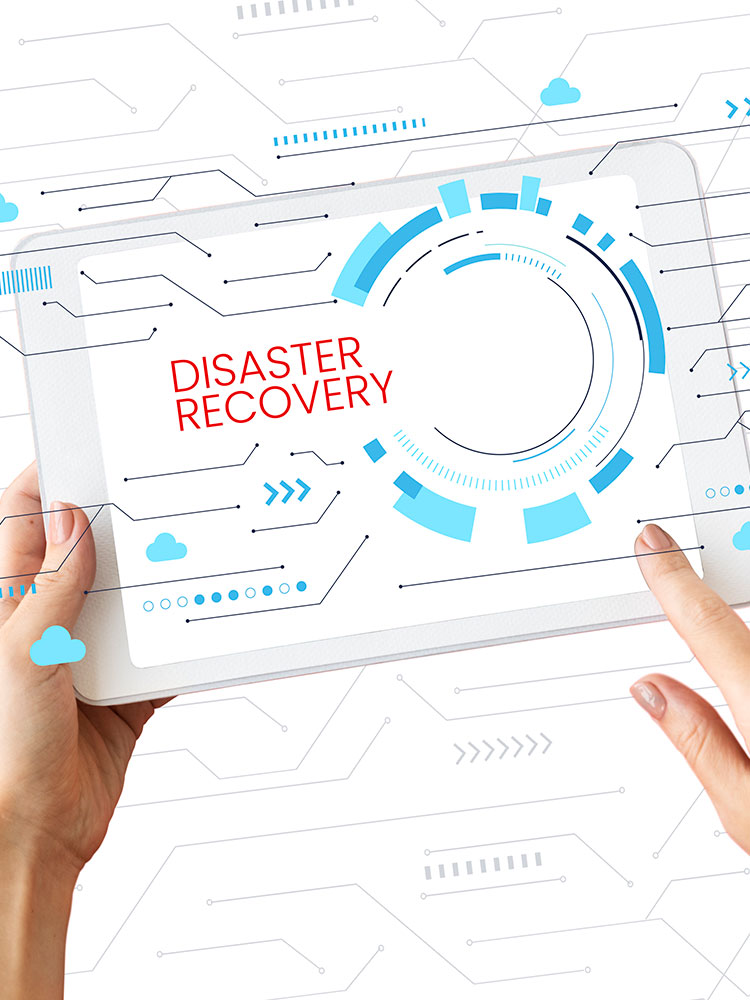dynacomm
Disaster
Swift Solutions for Lost Data. Time is Money, We Save Both.
Disaster recovery (DR) is a plan that helps an organization restore its IT infrastructure and data after a disaster. DR can help an organization regain access to its systems and data after a natural disaster, cyber-attack, or other disruption. It is vital to have a DR plan in place and many industries require this for trading compliance purposes such as banking, financial services, medical, insurance to name a few.
Contact us to express your interest and we will gladly get in touch with you to discuss your DR plan requirements.

What’s in a disaster recovery plan?
BIA
Business impact analysis
A BIA assesses the potential impact of a disaster on a business’s operations. It helps identify critical systems and prioritize recovery efforts.
RTO
Recovery time objective
The maximum amount of time that is acceptable to take to restore critical systems and resume operations.
RPO
Recovery point objective
The maximum amount of data loss that’s acceptable over a period of time.
Equipment
Includes the hardware and software used to maintain and protect a system.
Data
Includes a strategy for backing up critical information.
Facilities
Includes plans for restoring functionality in the event of a disaster.
Personnel
Includes plans for assigning responsibilities.

Why is a DR plan important?
The first steps in developing a sound DR plan are to conduct a BIA and RTO. Though consultation and we work with you to establish the objectives.
Disasters can impact businesses in different ways, creating all sorts of complex problems. From a fire that affects physical infrastructure and worker safety to a cloud services outage that closes off access to sensitive data storage and customer services.
Having a sound disaster recovery strategy helps ensure businesses will recover quickly.
Here are some of the greatest benefits of building a strong disaster recovery strategy:
Business continuity
This can help ensure that businesses return to normal operations after an unplanned event has occurred, providing data, backups and other critical services.
Cost reduction
Less downtime
Compliance
Businesses that operate in heavily regulated sectors like healthcare, finance and banking face heavy fines and penalties for data breaches because of the critical nature of the data they manage. Having a strong disaster recovery strategy helps shorten response and recovery processes after an unplanned event, which is critical in sectors where the amount of financial penalty is often linked to the duration of the downtime.